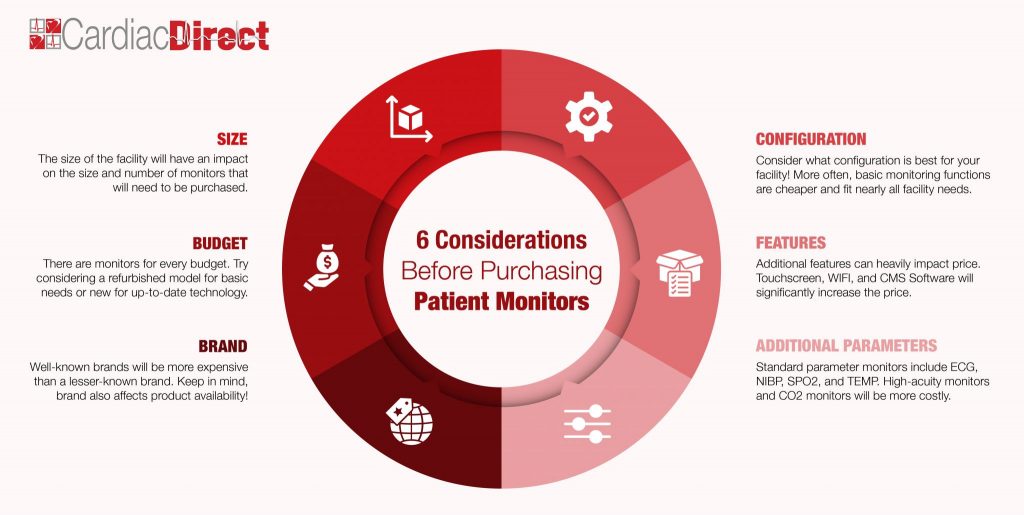The production of patient monitors has soared within the last few years, heavily saturating the market with a wide variety of choices with unique features. With so many options, it is important to discover what is necessary for your facility’s needs. Cardiac Direct has arranged 6 important considerations for purchasing a patient monitor: size, budget, brand, configuration, features, and additional parameters.
- Size: How much room does your facility have? How many monitors will you need? Taking these questions into consideration will affect the size of the monitor(s) you should buy.
- Budget: What is your budget? Will a refurbished patient monitor fit your budget better? Do you require the up-to-date and innovative technology of a new model?
- Brand: What brand will you choose? Some brands, like Welch Allyn, have been in this business longer than others. Longer standing brands provide more security and trust, but are typically more expensive.
- Configuration: What kind of functions are necessary for your facility? On a tighter budget, many patient monitors will provide basic readings such as just blood pressure or only pulse oximetry.
- Features: Do you need Bluetooth, touchscreen, WIFI connection, CMS software, etc.? Patient monitors with these features tend to cost more than a standard monitor.
- Additional Parameters: A standard parameter patient monitor will generally include ECG, NIBP, SPO2, and TEMP. Will you need higher-acuity or add CO2? Monitors with CO2 and/or higher-acuity are on the pricier end of monitors.

